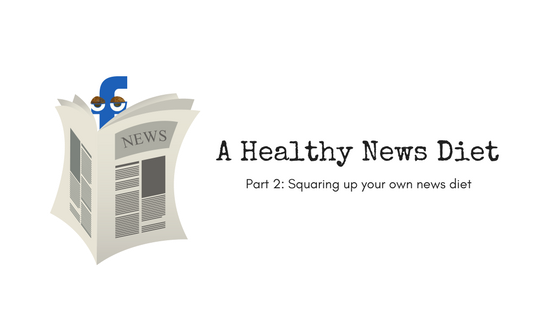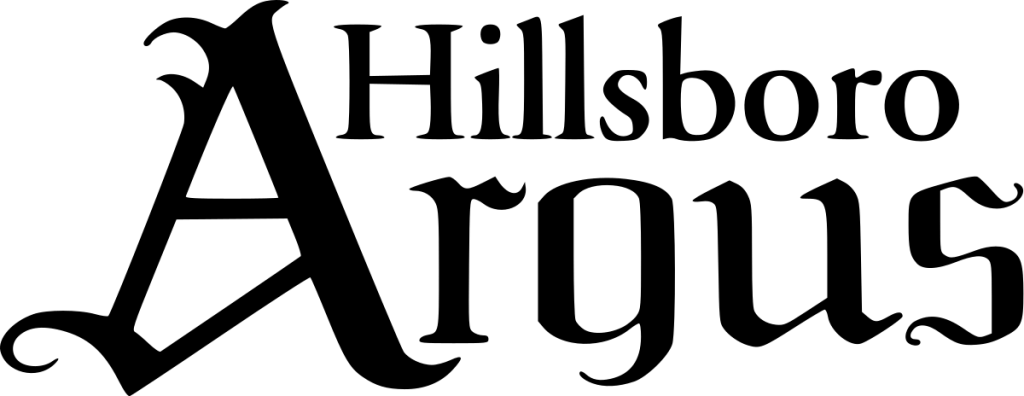In Part 1, I reviewed the need to have a balanced, healthy news diet for two purposes: to be better informed and to improve our personal capacity to listen to new and different perspectives. In Part 2, I offer tips to square up your own news diet, based on my own personal attempts to do so. Along the way, I’ll give examples of specific news sources that I’ve either added or cut out of my news diet. These are neither criticisms nor endorsements of those sources; I simply offer them as examples.
I’ll repeat my disclaimer from Part 1: you’ll figure out pretty quickly based on my news habits and diagnostics that I lean to left side of the political spectrum. If you lean to the right, simply invert my examples.
Step 1: Education
I encourage everyone to learn a little bit about the causes and amplifiers of polarization. I can’t recommend the Polarization chapter of #Republic enough, for its evidence-based and careful survey of polarization effects. A few of the phenomena Sunstein covers in this chapter include biased assimilation, increases in polarization within homogeneous groups, and deepened polarization in response to corrections. It is possible to make things worse if you expose yourself to alternative viewpoints too quickly, so go slow.
Education about cognitive biases and group psychology is an important step in long-term healthy news diet because it will give you tools to adapt as the news ecosystem changes. Skip it for now if it will get in the way of accomplishing steps 2 through 4.
Step 2: Diagnostics
Get objective information about how much of a bubble you are or aren’t living in. We usually know what our main sources of news are, but we might only have a sense of how left- or right-leaning our social networks are. Use a tool like the Chrome extension PolitEcho to diagnose the political composition of your Facebook feed. I don’t know of a similar tool for Twitter, but would love one. If you’re living in quite a bubble (like me, sheesh) be more aggressive with steps 3 and 4. And even if your diagnosis says that you’re pretty balanced, think about whether you actually hear from one group of friends more than others. Facebook’s algorithms privilege posts that align with its assessment of your politics, since it is in their interest to get you to engage as much as possible. So even if you have a lot of friends with different political perspectives, think about whether you actually see them in your feed.

Step 3: Clean Out Junk Food, AKA fake news and hyperpartisan crap
Get familiar with how to spot fake news (Facebook has some alright if superficial tips). Fake news has received plenty of coverage in recent months. If you’re reading this article it’s probably not your biggest problem, though you should know how to spot it, and how to tell your friends if they are spreading it.
The harder part is cleaning out the hyperpartisan crap. This is news with an ideological angle that prevents you from trusting that you’re getting the whole story. It also includes activist sites masquerading as news sources, such as the Daily Kos. These sources are great at appealing to our preexisting notions and taking advantage of our brains’ desires to assimilate information that reinforces our existing beliefs.
Here’s a good test: if an article or headline seems like a delicious tasty snack to your ears, it’s probably designed to be that way. Beware of headlines and stories that seem designed to elicit an emotional reaction in the reader, whether it is outrage or righteous indignation.
You can cut news junk food out of your news feed by blocking these sources on social media and by not visiting hyperpartisan websites. Remember: don’t block people; block sources. We’re trying to reduce misinformation and polarization, not isolate ourselves further. You can use the pull down menu at the top right of a Facebook post to “see less of” or totally block certain sources. There is an argument to be made for not blocking these sources (so you can warn your friends that they may be spreading unhelpful information) but I like to block so I don’t even read the headlines. I worry that an attractive but misleading headline will stick in my head if I don’t get a chance to dive in and assess it. A recent example is the oft-repeated claim that a person who has been raped is considered to have a preexisting condition under the house’s ACHA bill. It’s an easily repeated and emotionally triggering line that is quite misleading.
- Spotting Fake News: Wikipedia has a pretty good list of fake news websites, though fake news evolves very quickly so figuring how how to spot fake news is more useful than memorizing a list.
- Spotting Hyperpartisan News: Hyperpartisan news, also known as propaganda, can vary in credibility from barely better than fake news to seemingly reputable news outlets. Often they are activist organizations masquerading as news sources. Remember, if it feels designed to make you yell at your computer screen or feel great about your preexisting beliefs, it’s probably designed to do that and you should think twice before believing it. This is really hard to do, so cutting it out as much as you can is a good approach. Oh, and do not go to hyperpartisan sites if you’re trying to learn about “the other side!” You’ll just get mad and then you’ll give up. Bad.
- Examples: Occupy Democrats, Brietbart, the Daily Kos, InfoWars, RedState, US Uncut, Eagle Rising, anything with the word “viral” in the title, any source that shares memes, etc.
Changes I’ve made*:
- I don’t see much conservative hyperpartisan news coming through my Facebook feed, but I do get plenty of opportunities to block liberal hyperpartisan sources. Occupy Democrats, US Uncut, Daily Kos, Natural News, Being Liberal, and a bunch of other sites are on my blocked list.
- Facebook isn’t the only place to watch out for fake and hyperpartisan crap. Twitter is much more customizable. I use it to follow reputable journalists and professionals, so I don’t see as much propaganda coming through. If you can cultivate a solid, diverse Twitter feed, it’s almost certainly a better place to get news than Facebook.
- I cleaned up my podcast habits. I initially liked Pod Save America, which is a new-ish podcast led by three “Obama-bros” with a lot of political experience. I’d categorize it as news comfort food. Extra cheesy macaroni-and-cheese, maybe. I realized that it wasn’t good for me when they interviewed Katie Couric, who grilled them for digging into their own partisanship after the 2016 election. Their reluctance to acknowledge the counterproductiveness of their retrenchment into partisanship wasn’t satisfying to me. That was the last episode I listened to. I’d rather listen to podcasts where the hosts challenge themselves and their guests to explore and examine differing viewpoints.
- I still need to do a better job of incorporating international stories and news sources into my news diet. Most of my news is US-based, which means I have less perspective on what’s going on internationally and little idea of how the rest of the world views US issues and politics. This is my next project.
Step 4: Add Diversity!
Ah, vegetables. Some of us love them, some of us love to hate them. Either way, they’re definitely better when they’re of high quality. So, what are some good vegetables to add into our diverse news diet? First, a warning: pick a few really high-quality opposing viewpoints to listen to. If you start with an unthoughtful or radical viewpoint, you will probably experience a backlash effect. Bill Kristol is my preferred “gateway conservative.”
Changes I’ve made:
- On Twitter, I followed some conservative-leaning reputable news outlets so I see a more balanced set of headlines and perspectives. The Wall Street Journal, The Hill, and the National Review are now part of my Twitter feed. I don’t always click through to the articles, but I do get a better sense of how folks on both sides of the aisle are thinking about and reporting on current events.
- I follow several thoughtful conservative pundits who offer commentary and analysis on the news. Arthur C. Brooks, Bill Kristol, David Frum, Ana Navarro, and T. Greg Doucette are some of my favorites. I admit that some of them, while conservative, reinforce my existing views about the current political climate, but this also makes me less likely to give up and unfollow them like I might with a more extreme pundit.
- I have added some new podcasts to my queue, on the recommendation of my colleague Robin Teater, who has a admirably balanced news diet. Potomac Watch, the the Wall Street Journal’s D.C. politics podcast, provides thoughtful commentary from a conservative panel. Bill Kristol has two podcasts that I enjoy, including one where he is the thoughtful voice of reason (Kristol Clear) and an interview podcast (Conversations with Bill Kristol). I also added David Axelrod’s podcast, The Axe Files. While David Axelrod is a committed Democrat, he interviews guests from across the political spectrum thoughtfully and thoroughly.
- I tried a technological fix call Escape Your Bubble, which gradually adds stories from opposing viewpoints into my Facebook feed. These technological approaches are still very much in their infancy, and the limitations are apparent. Escape Your Bubble flags the stories it inserts and tends to repeat stories often, which means it has a pretty insignificant impact on my news diet. Until this technology is better, we’ll need to keep doing the legwork of incorporating diverse voices ourselves.
Bonus Step! Once your information sources are cleaned up and diversified, brush up on your listening and inquiry skills.
Even if you reach true news enlightenment, you’ll still be living in a world where people consume all kinds of news for all kinds of reasons, and you’ll always encounter people with different viewpoints. By knowing a bit more about the “other side” you’ll have more understanding of them, but there are a couple more tools that will come in handy.
Learn how to be a great listener. That is, learn how to listen to someone else fully without needing them to listen to you. This is tremendously difficult, but can be achieved with a lot of practice. Beware of approaching listening using a tit-for-tat strategy. You may need to listen to someone for a long time (years, even) before they will listen to you, but they are likely to never reach that point if you don’t make the effort to fully listen to them. I also find that inquiry never fails me. When paired with the ability to listen deeply, inquiry can disarm even the most polarized individuals. People always want to be heard, so ask them a few questions, put your own perspectives aside for the moment, and listen.
Neither listening nor inquiry are easy to master; in fact, they are deceptively simple. They go against most of our modern examples of political debate, persuasion, and talking (yelling) heads on TV. Seek out resources on mediation, dialogue, and navigating difficult conversations for a deeper dive on this topic.
Check out Part 3 for a review of the inspiration for this post, Cass Sunstein’s #Republic.
*Remember, my politics lean liberal, as do my news sources and social networks, so my experience is with correcting that imbalance. If you’re in a conservative bubble, find reputable liberal news sources and pundits to follow, and try to cut out unreliable and hyperpartisan conservative sources.


